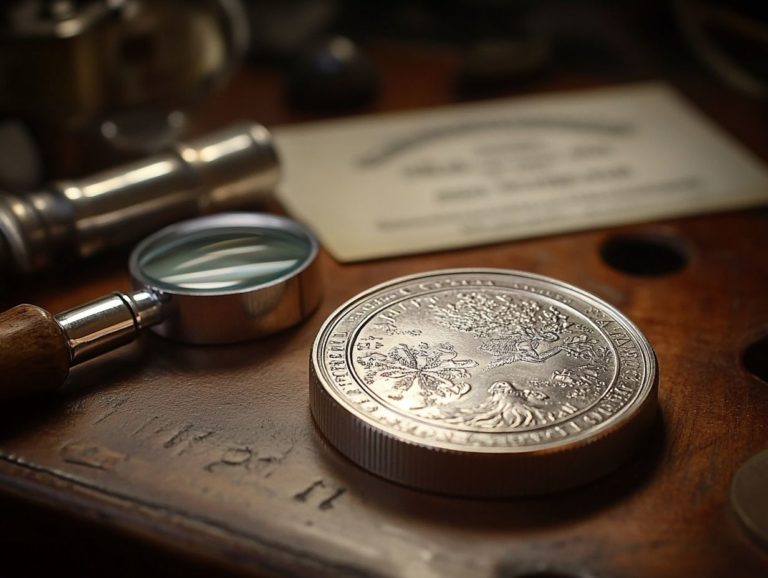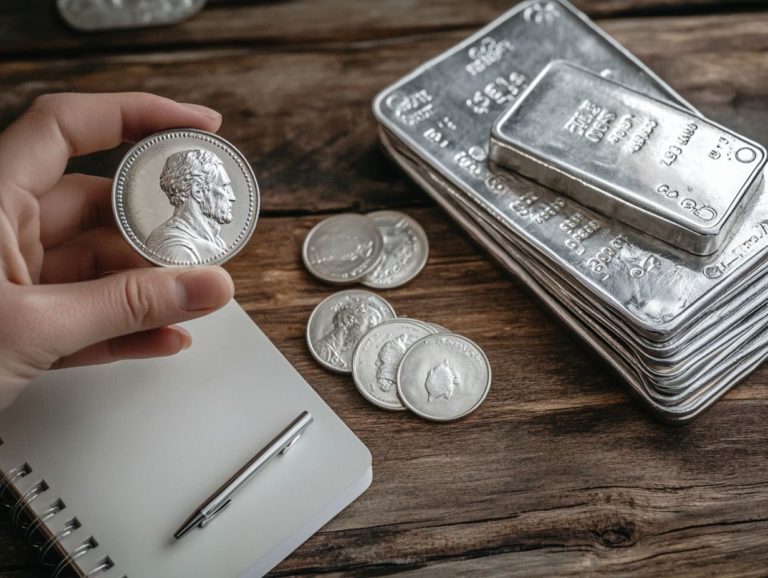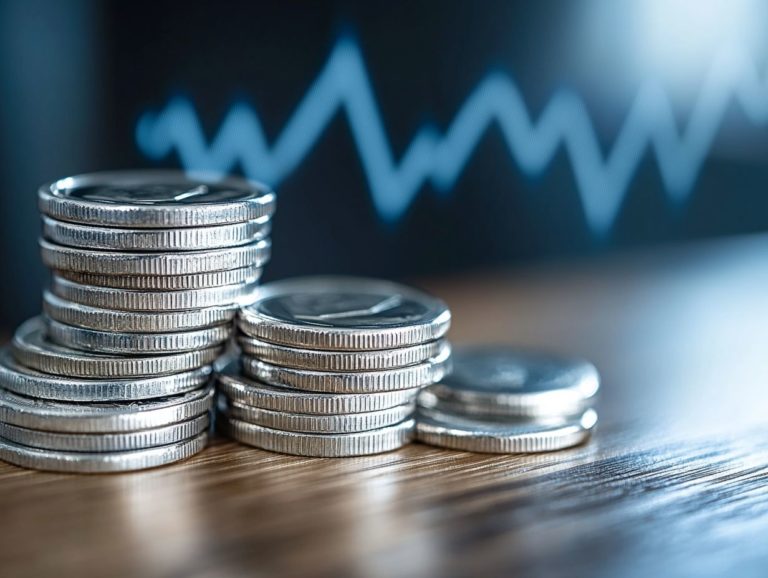The Risks and Rewards of Silver Investing
Silver investing presents a remarkable opportunity for both seasoned investors and newcomers.
This article lays out the essentials, beginning with what silver investing involves and highlighting its key benefits, such as diversification and potential returns. It s crucial to acknowledge the risks involved, including market volatility.
You ll find an exploration of important factors to consider before you dive in, along with practical tips for getting started. Whether your goal is to enhance your portfolio or secure your financial future, this guide will empower you every step of the way.
Contents
- Key Takeaways:
- The Basics of Silver Investing
- Benefits of Investing in Silver
- Risks of Silver Investing
- Factors to Consider Before Investing in Silver
- How to Get Started with Silver Investing
- Frequently Asked Questions
- What is silver investing and why is it risky?
- What are the potential rewards of silver investing?
- What are the main risks associated with silver investing?
- How does silver investing differ from other forms of investment?
- What are some strategies for minimizing risks in silver investing?
- What are some ways to potentially increase rewards in silver investing?
Key Takeaways:
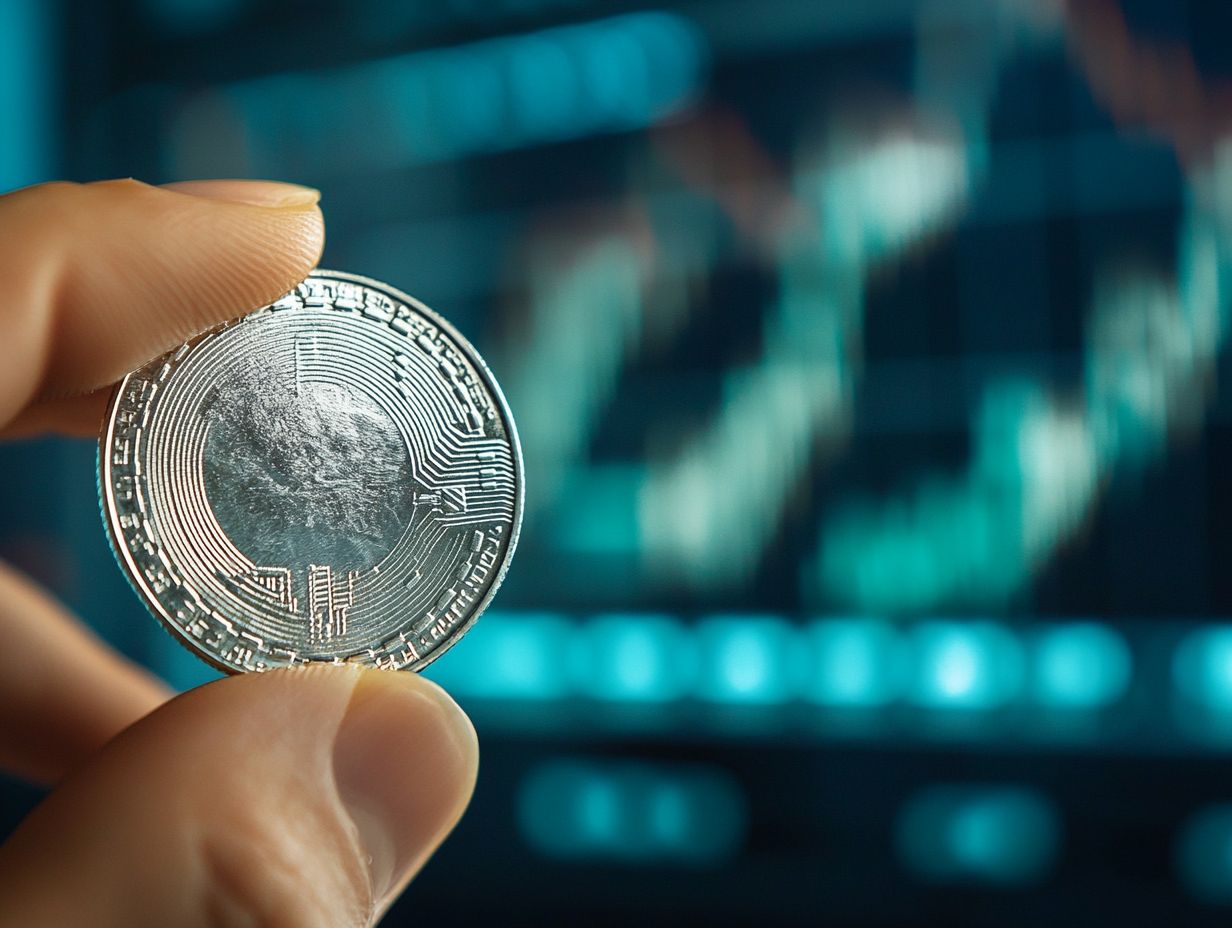
- Diversifying your investment portfolio with silver can potentially yield high returns and protect against market volatility.
- Before investing in silver, carefully consider market trends, your financial goals, and risk tolerance to make informed decisions.
- Choosing the right investment method and staying informed on market trends are key factors for successful silver investing.
The Basics of Silver Investing
Silver investing presents a captivating opportunity within the expansive realm of precious metals. It is increasingly recognized for its unique attributes particularly as a safeguard against inflation and economic instability. You may find yourself considering silver as a complementary asset to gold, providing a means to effectively diversify your investment portfolio.
With tangible assets like silver bullion, coins, and bars available for direct ownership, you can alleviate some cash availability issues commonly tied to other investment avenues. To navigate this domain successfully, it s essential to grasp the market dynamics that drive silver prices.
What is Silver Investing?
Silver investing involves the practice of purchasing and holding silver in various forms, such as coins, bars, or bullion, as a strategic way to preserve wealth and enhance your financial portfolio.
This approach has gained significant traction recently as individuals seek to diversify their investments and shield themselves from inflationary pressures. Unlike gold, which often acts as a safe haven during economic turbulence, silver fulfills a dual role as both an investment vehicle and a vital industrial commodity, making it especially relevant in today’s market.
From the creation of exquisite jewelry to its crucial role in essential electronics, the demand for silver continues to surge, elevating its status as an attractive investment option. As economic uncertainty looms, savvy investors weigh silver’s potential for appreciation against traditional assets, appreciating its liquidity and affordability compared to its more expensive counterpart.
Benefits of Investing in Silver
Investing in silver unlocks exciting benefits you can t afford to miss! It serves as a hedge against inflation and a strategic means of diversifying your portfolio.
The liquidity and intrinsic value of silver enhance its status as a safe-haven asset during times of economic uncertainty, providing you with the potential for significant returns.
Historical trends reveal that silver prices can appreciate notably, influenced by factors like industrial demand and market fluctuations, amplifying its investment potential.
The rising demand for silver in sectors such as electronics and renewable energy highlights its significance as a crucial financial asset in your investment strategy.
Diversification and Potential Returns
Diversifying your investment portfolio is essential for minimizing risks and maximizing potential returns, and silver stands out as an excellent option thanks to its distinctive market behavior.
Historically, silver has proven to be a reliable hedge against inflation, making it particularly appealing during times of economic uncertainty. When stock markets stumble or currencies lose their luster, investors often turn to precious metals, resulting in a surge in silver prices.
Take, for instance, the 2008 financial crisis silver outperformed many traditional assets, appreciating around 20% as market volatility reached its peak. Recent studies indicate that silver s correlation with equities is generally low, further solidifying its role as a stabilizing force in your investment portfolio. This not only provides a cushion against losses but also opens the door to substantial returns.
Don t miss out on this chance to explore silver investment options today!
Risks of Silver Investing
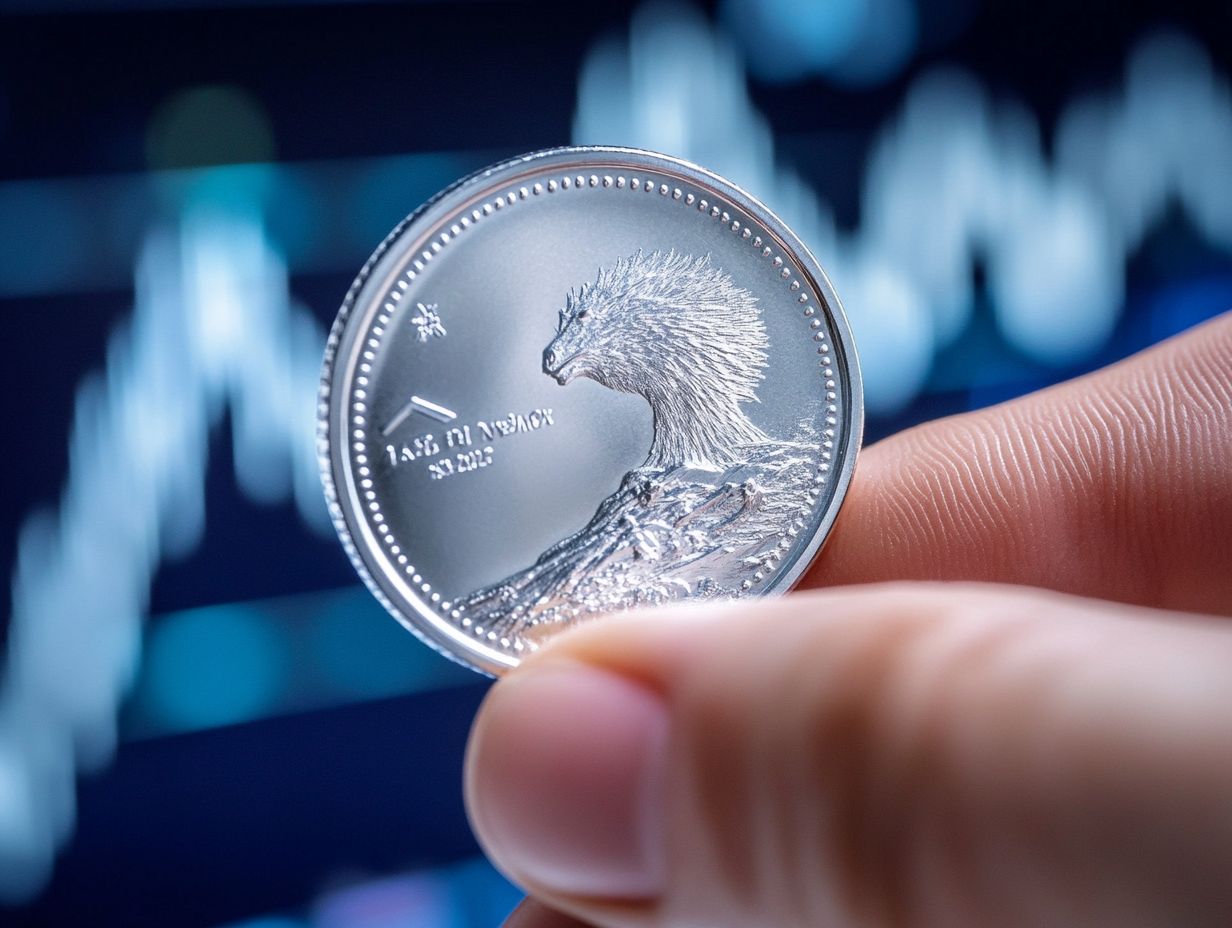
While silver investing presents captivating advantages, it carries its share of risks. These include price volatility and liquidity challenges that can profoundly affect your returns.
Market fluctuations, often influenced by geopolitical tensions or shifts in economic conditions, can result in unpredictable changes in silver prices. This complicates your investment strategies.
Understanding the risks is crucial for making well-informed decisions in a financial landscape that can sometimes feel quite turbulent.
Market Volatility and Other Risks
Market volatility poses a significant risk factor in silver investing. The ever-fluctuating silver prices can impact your liquidity and investment returns.
This unpredictability stems from various sources, including economic downturns, shifts in supply and demand, and geopolitical tensions. As you navigate these turbulent waters, external elements like inflation rates and changes in interest rates can dramatically sway silver prices.
In such a volatile environment, mastering effective risk management strategies is essential. By diversifying your portfolio and establishing clear exit points, you can protect your interests while seizing opportunities.
Staying informed about market trends and economic indicators is equally crucial for making timely and informed decisions.
Factors to Consider Before Investing in Silver
Ready to dive into silver investing? Let s explore what you need to know! Before you start your silver investing journey, it s essential to assess various factors.
Consider market trends, economic indicators, and your personal financial goals. This careful evaluation will help align your strategies with your risk tolerance.
By doing so, you can ensure a tailored approach to your financial aspirations.
Market Trends and Forecast
As a silver investor, analyzing market trends and forecasts is essential. This equips you with the insights needed to predict silver prices and understand the broader economic landscape.
By closely monitoring recent fluctuations in demand, global economic indicators, and industrial usage, you can better gauge potential price movements.
A surge in inflation or shifts in interest rates can send ripples through the commodities market, including silver. Therefore, it’s vital for you to stay informed.
Grasping the relationship between silver s value and other economic elements like currency strength, which refers to the value of a country’s money compared to others, and geopolitical tensions can significantly enhance your investment strategies.
Ultimately, a well-rounded understanding of these factors enables you to make more informed decisions and optimize your portfolio for both short-term gains and long-term stability.
Personal Financial Goals and Risk Tolerance
Understanding your personal financial goals and risk tolerance is essential when considering silver investing. This directly influences your investment strategies and potential outcomes.
By recognizing these key elements, you can determine how much to allocate to silver within your portfolio. If you identify as a conservative investor with a low-risk tolerance, you might opt to allocate only a small percentage of your total investment to silver.
On the other hand, if you lean towards a more aggressive investment style, you might consider a larger allocation, driven by your belief in silver’s potential for higher returns as market demand fluctuates.
These differing approaches underscore how your financial objectives and risk profile shape your silver investing strategies. Tailor your involvement in precious metals to suit your unique circumstances.
How to Get Started with Silver Investing

Embarking on your silver investing journey requires a thorough understanding of the various investment options available to you. Choose the most suitable methods for purchasing silver and identify reputable major dealers to facilitate seamless transactions.
This foundational knowledge will set you on the path to successful investments. Stay informed and act quickly to seize opportunities in the silver market!
Choosing the Right Investment Method
Choosing the right investment method is crucial for your silver investing success. You ll need to navigate options like physical silver, silver coins, and silver bullion products.
Each option has its unique pros and cons, influenced by factors like liquidity, storage, and the potential to increase in value. If you prefer physical silver often in bars and ingots you might enjoy holding a tangible asset. Silver coins are appealing too, especially for collectors who value their historical significance.
Silver bullion stands out as a simple investment choice with lower premiums. To make the best decision, evaluate your individual investment strategies and goals.
Consider your risk tolerance and time horizon to find the method that aligns best with your financial aspirations.
Tips for Successful Silver Investing
To make your silver investing journey a success, embrace specific tips that can greatly enhance your experience and results.
Start by purchasing silver from reputable dealers. This ensures the authenticity and quality of the metal.
Seek out secure storage locations to manage your storage costs effectively. Finding smart strategies can save you money!
Consider creating a diversified investment strategy that mixes physical silver with silver ETFs. This balances risk and potential returns.
Stay informed about market trends and practice patience during fluctuations. Navigate the silver landscape with confidence as you work towards your financial goals.
Frequently Asked Questions
What is silver investing and why is it risky?
Silver investing means buying silver as an investment. It’s risky because silver’s value can fluctuate greatly, making it unpredictable and leading to potential financial losses.
What are the potential rewards of silver investing?
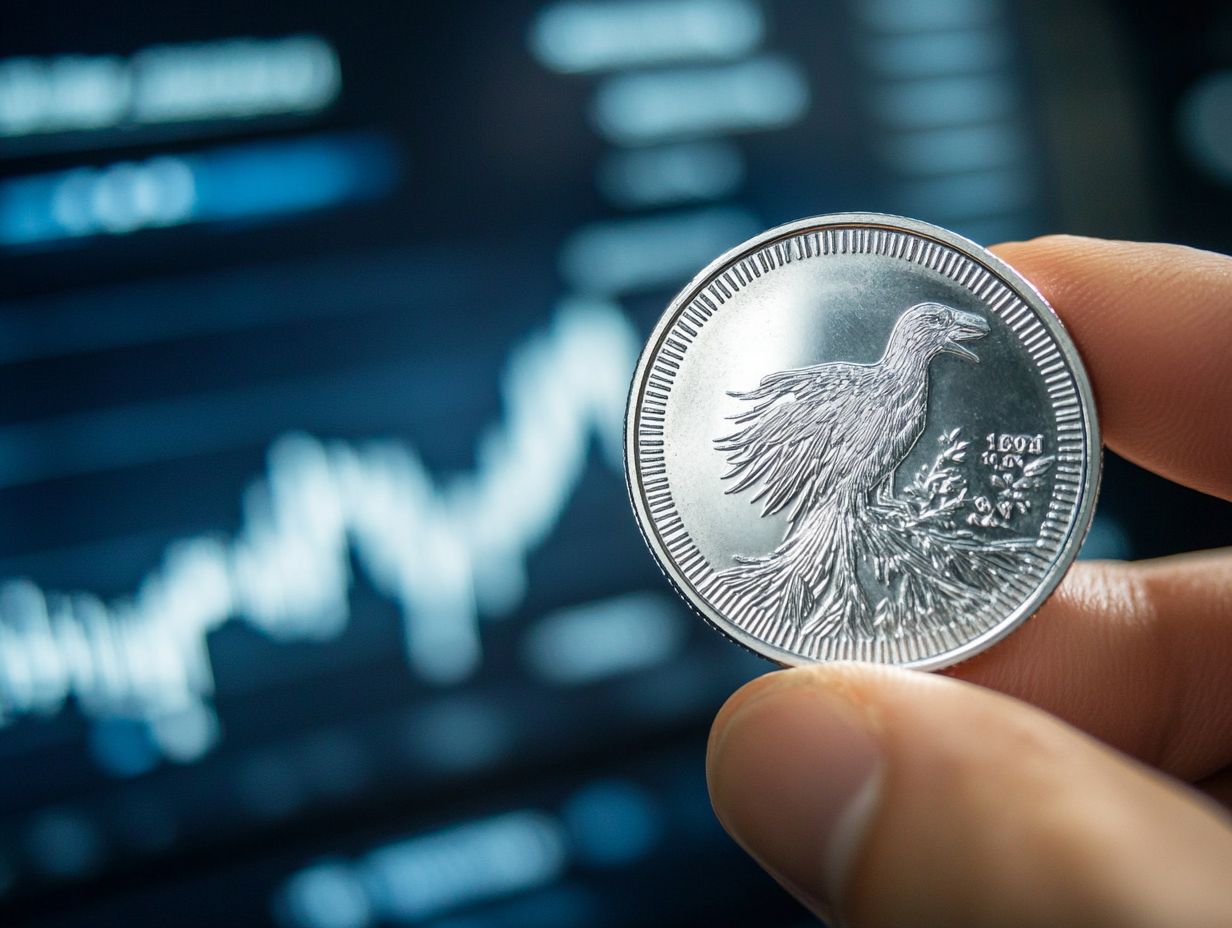
The rewards can include high returns on investment as silver’s value can increase significantly over time. It may also serve as a hedge against inflation and economic downturns.
What are the main risks associated with silver investing?
The main risks include market volatility, supply and demand fluctuations, and potential scams. Always research and understand the market before investing.
How does silver investing differ from other forms of investment?
Silver investing differs from stocks or real estate since it s a physical asset that doesn t generate income. Its value depends solely on market demand and can be influenced by factors like industrial uses and jewelry trends.
What are some strategies for minimizing risks in silver investing?
Strategies include diversifying your portfolio with other assets, conducting thorough research, and staying updated on market trends. Consulting a financial advisor before making decisions is also key.
What are some ways to potentially increase rewards in silver investing?
To increase rewards, consider buying silver at lower prices and selling when values rise, investing in silver mining companies, or buying silver in various forms like bullion, coins, or ETFs. Always assess risks carefully before investing.











